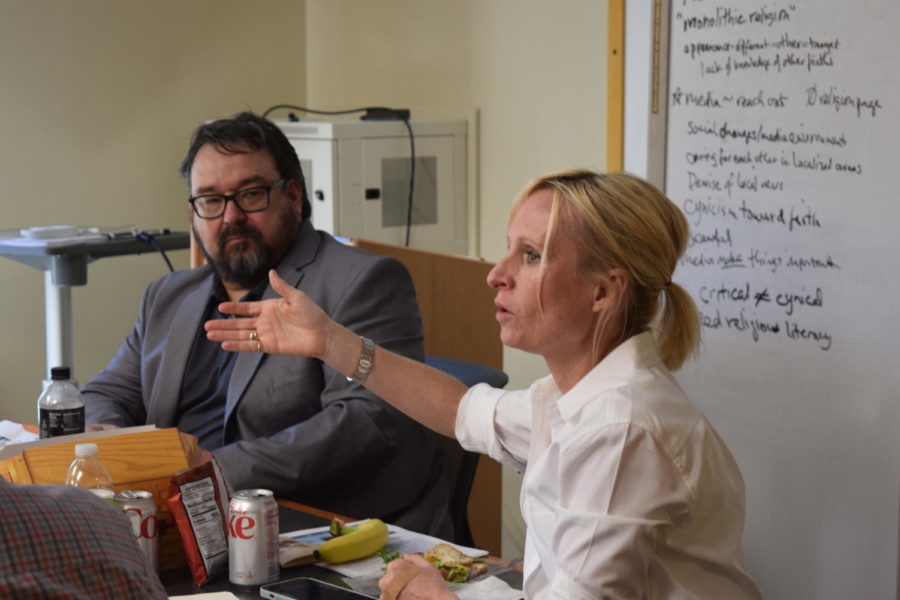First Amendment Days: Faith in media
Dave Saldana (left) and Brooke Zaugg (right) speaking to faith and media leaders at the Covering Faith: Facts & Friction in the News Media First Amendment Days event, April 12.
April 12, 2023
About 60% of people believe that the media perpetuates faith-based stereotypes rather than protecting against them, according to a survey by HarrisX.
On Wednesday, local faith and media leaders joined together during the “Covering Faith: Facts & Friction in the News Media” First Amendment Days event to discuss solutions on how they can cooperate to bring religion back into local media in good faith.
Co-sponsored by the Faith & Media Initiative, a non-profit organization aiming to ensure accurate and balanced representation of all faiths in entertainment and journalism, and the Greenlee School of Journalism and Communication, the event saw nearly a dozen leaders from both local places of worship and news organizations.
The event was intended to bring together leaders of faith and the media to address how matters of religion and spirituality are covered in the news and how both parties can be better resources for each other. Those at the meeting said this would require strong relationships, multiple viewpoints, and the time and resources for a dedicated team to devote toward religious news.
Dave Saldana and Brooke Zaugg led the discussion on behalf of the Faith and Media Initiative. Saldana welcomed the group and established that it was a safe space for all to discuss their concerns about religion’s perception in the news.
Perry Pace, the We Are Iowa (WOI) news director, was the first to speak during the open discussion. As someone who is strong in his faith, he emphasized that religion should be more present in local news.
“Faith and media, they don’t have to be mutually exclusive,” Pace said.
The media can be an additional place for religious groups to promote the good that many of their members do every single day. Unfortunately, although these stories may be of great human interest, they often occur without any media coverage.
“We don’t know what we don’t know,” said Kim Norvell, the communities editor for the Des Moines Register. “We’re not actively involved in your church or even in the religion practicing religion, so we just maybe aren’t aware that it’s a story.”
Norvell said the best way for religious groups to get noticed by local news is by being proactive and persistent with them.
Relationships are another factor that many local news outlets have to be conscious of when covering topics like religion.
Today, news organizations in the Des Moines and Ames area struggle to maintain their relationships with sources because of new, young staff who may only have been around for a few years and have yet to make connections.
“The turnover is obviously very high, unfortunately, in this business,” Norvell said, “So I think that’s maybe the challenge–figuring it out with limited resources.”
Since reporters seem to shift every other year, leaders in religious communities could be forgotten and have difficulties making their way back into the newscape. Fortunately, the event united leaders of faith, current local news reporters and higher-ups through meaningful conversation that hoped to contribute to more inclusivity with religious groups.
To continue the First Amendment Days celebration, there will be free food offered by the Mucky Duck Pub on Central Campus from 11 a.m. to 1 p.m. Thursday. All are welcome to attend.

















